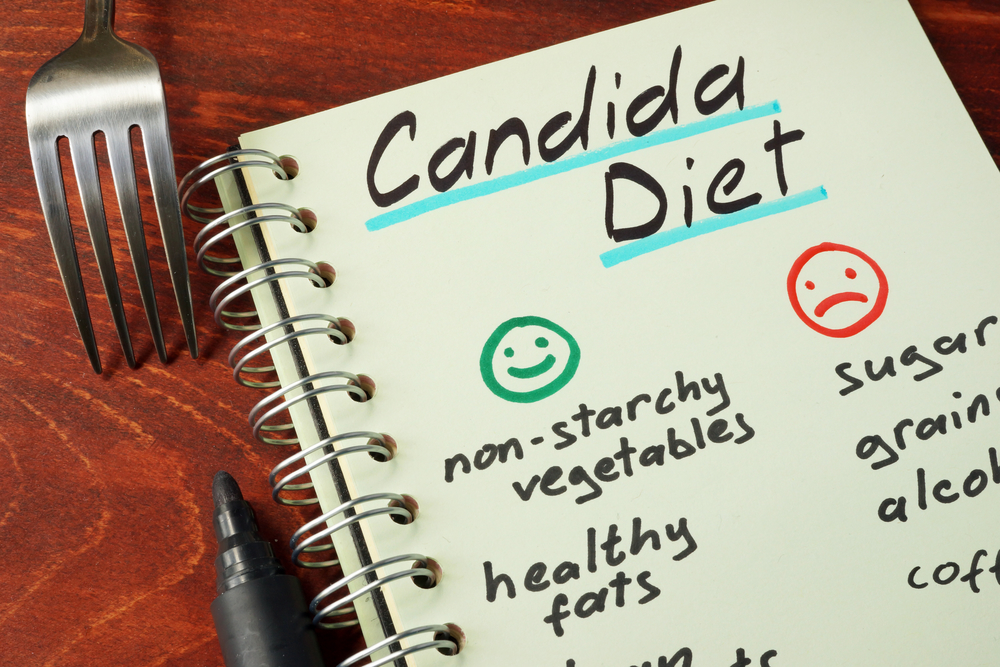Candida albicans is a yeast that resides in the body in the digestive tract and the vagina. Candida levels are kept in check by the immune system and beneficial probiotics in the body. If antibiotics kill these bacteria, and if the immune system becomes weakened, Candida yeast will grow unchecked, and local infections like oral thrush, skin infections, and vaginal yeast infections in women will take place.
People with weakened immune systems, such as with cancer or AIDS, may also develop widespread Candida infection, known as a serious medical condition called systemic candidiasis. However, some alternative practitioners believe that overgrowth of Candida albicans in the intestines is responsible for yeast syndrome. It may also be responsible for fatigue, mood swings, headache, sinus congestion, depression, poor memory, concentration, and cravings for sweets.
It is essential to keep in mind that the excess Candida yeast in the intestines is thought to penetrate the intestinal wall by causing yeast or other unwanted particles to be absorbed into the body. The absorbed yeast particles are also believed to activate the immune system by resulting in an allergic hypersensitivity to Candida.
What are the Contributing Factors?
Here are some of the significant contributing factors in Candida infection:
- Use of oral contraceptives, antacids, anti-ulcer medications, steroids, or frequent or long-term use of antibiotics
- Pregnancy
- High-sugar diets
- Smoking
- Food allergies and intolerances
- Diabetes
What is the Candida Diet?
Some practitioners use the diet in order to address Candida overgrowth. If you want to get complete guidance on the Candida diet, visit this link.
- Avoid sugar
According to scientific studies, sugar promotes the growth of yeast. The total carbohydrate intake per day is limited. During the initial two to three weeks on this diet, the carbohydrate intake can be restricted to less than 60 grams per day as well as depending on age, health, activity level or the extent of food sensitivities.
Moreover, low-carbohydrate foods like meat, chicken, shellfish, turkey, non-starchy vegetables, and nuts are emphasized instead.
- Avoid foods containing any type of yeast
It includes fermented foods like bread made with yeast, cheese, mushrooms, tomato paste, and beer. Many experts believe that people with Candida overgrowth can also be allergic to other fungi. However, not all practitioners believe this restriction is necessary.
It is essential to keep in mind that the length of time on a Candida diet depends on the length of time one has had symptoms or its severity. The general level of health is also another essential factor to alternative practitioners while recommending a treatment plan.
Moreover, people who do respond to this often report that it takes a minimum of four weeks before the improvement is noticeable. For many, it can also take months. Once there is sufficient improvement in overall symptoms, practitioners suggest slowly reintroducing foods you’re your restricted list back into the diet. Moreover, you can also prefer other diets with Candida, many people prefer keto plans.
What about Herbs and Supplements?
Another essential component of an expert’s plan is herbs and supplements, or in certain cases, prescription drugs to decrease the amount of Candida yeast in the body.
Alternative recommendations by starting with smaller amounts of herbs and supplements and then increasing gradually. Otherwise, a temporary worsening of symptoms and yeast die-off may occur. It is also believed to result when the Candida yeast is killed as well as release protein fragments.
Scientific Evidence on Candida diet
Keep in consideration that there is very little scientific evidence showing that candida yeast overgrowth is common, and the diets, herbs, and supplements may help.
However, Candida overgrowth has not been well-supported by scientific evidence. There is a great amount of anecdotal evidence in integrative practitioners, and ultimately, many people feel better after cutting out sugar and yeast-based foods. If you are also experiencing some Candida overgrowth symptoms, it’s essential to talk with your doctor.


